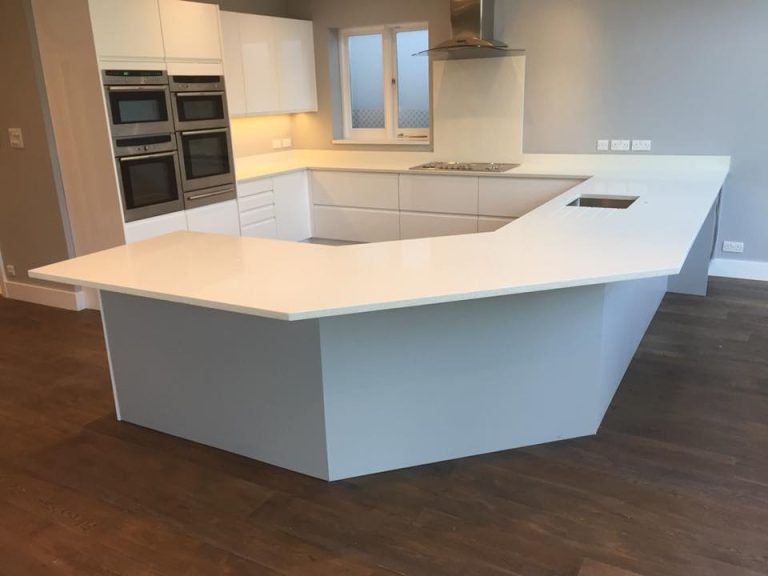Choosing a new kitchen worktop is a significant decision. It’s an investment that impacts both the functionality and the aesthetics of one of the most important spaces in your home. Quartz worktops, renowned for their durability, low maintenance, and stunning visual appeal, have become a popular choice for homeowners seeking a blend of practicality and style. However, with a vast array of colours and patterns available, selecting the perfect option can feel overwhelming. This comprehensive guide will walk you through the key considerations to help you choose the right colour and pattern for your quartz worktop from FM Marble, ensuring it complements your kitchen design and reflects your personal taste.
Understanding the Enduring Appeal of Quartz Worktops:
Before diving into colour and pattern selection, it’s worth appreciating why quartz has become such a sought-after material for worktops.
- Durability and Longevity: Quartz is an engineered stone composed of natural quartz crystals bound with resins. This manufacturing process results in a non-porous surface that is highly resistant to scratches, chips, and stains, ensuring your worktop looks beautiful for years to come.
- Low Maintenance: Unlike natural stone options like granite or marble, quartz worktops do not require regular sealing, making them incredibly easy to clean and maintain. A simple wipe with soapy water is usually sufficient.
- Hygienic Surface: The non-porous nature of quartz also makes it a hygienic choice, as it doesn’t harbour bacteria or viruses as easily as some other materials.
- Consistent Appearance: As an engineered material, quartz offers a more consistent colour and pattern compared to natural stone, which can have significant variations. This allows for greater predictability in your design.
- Wide Range of Colours and Patterns: The manufacturing process allows for a vast spectrum of colours and patterns, from solid, uniform shades to intricate designs that mimic natural stone.
Key Factors to Consider When Choosing Colour and Pattern:
Selecting the right colour and pattern for your quartz worktop involves considering several key aspects of your kitchen design and your personal preferences.
- Your Kitchen Style: The overall style of your kitchen is a crucial starting point.
- Modern and Contemporary: For sleek, modern kitchens, consider solid, minimalist colours like white, grey, or black. Patterns can be subtle, such as fine veining or a consistent texture.
- Traditional and Classic: Traditional kitchens often suit warmer tones like creams, beiges, and browns. Patterns that mimic natural marble or granite with more pronounced veining can add a touch of elegance.
- Industrial: Industrial-style kitchens might benefit from darker greys, concrete-effect quartz, or even black worktops.
- Country and Rustic: Warmer, earthy tones and patterns with a slightly more textured or natural look can complement country or rustic kitchen designs.
- Your Cabinet Colour: The colour of your kitchen cabinets will significantly influence your worktop choice.
- Light Cabinets: Light-coloured cabinets (white, cream, pale grey) offer versatility. You can opt for a contrasting dark worktop for a striking look, a mid-tone for balance, or a lighter shade for a bright and airy feel.
- Dark Cabinets: Dark cabinets (black, navy, dark grey, deep wood tones) can be beautifully paired with lighter worktops like white, cream, or light grey to create contrast and prevent the space from feeling too heavy. You could also opt for a matching dark worktop for a dramatic and sophisticated aesthetic.
- Coloured Cabinets: If you have coloured cabinets (e.g., sage green, pastel blue), consider a neutral worktop like white, grey, or a subtle off-white to allow the cabinet colour to be the focal point. Alternatively, you could choose a quartz with subtle veining in a complementary tone.
- Your Flooring: The colour and pattern of your kitchen flooring should also be taken into account to create a cohesive look.
- Matching Tones: Consider choosing a worktop colour that has a similar undertone to your flooring (warm or cool) to create a sense of harmony.
- Contrast for Definition: If your flooring is plain, you might opt for a worktop with more pattern to add visual interest. Conversely, if your flooring is patterned, a more solid or subtly patterned worktop can provide a visual anchor.
- Your Splashback: The material and colour of your splashback will also interact with your worktop.
- Coordinating Colours: You can choose a worktop and splashback in complementary colours or different shades of the same colour for a unified look.
- Contrasting Textures or Patterns: Pairing a solid quartz worktop with a patterned tile splashback or vice versa can create visual interest.
- The Size and Light of Your Kitchen: The size and amount of natural light in your kitchen can influence your colour choices.
- Small or Dark Kitchens: Lighter colours like white, cream, and light grey can help to reflect light and make a small or dimly lit kitchen feel more spacious and brighter. Avoid very dark colours, which can absorb light.
- Large or Well-Lit Kitchens: Larger kitchens with ample natural light can handle bolder and darker colours without feeling overwhelming.
- Your Personal Style and Preferences: Ultimately, your personal taste should play a significant role in your decision. Choose colours and patterns that you find visually appealing and that will make you happy to spend time in your kitchen.
- The Level of Pattern You Prefer: Quartz offers a spectrum of patterns, from solid colours with no variation to intricate veining that mimics natural marble or granite. Consider how much visual interest you want your worktop to provide.
- Solid Colours: Offer a clean, contemporary look and are easy to coordinate with other elements.
- Subtle Patterns: Fine grains or flecks can add a touch of texture without being overwhelming.
- Veined Patterns: Mimic the look of natural stone and can add elegance and drama. The intensity and colour of the veining can vary significantly.
- Agglomerate Patterns: Feature larger chips of quartz and resin, creating a terrazzo-like effect.
Tips for Making Your Final Decision:
- Obtain Samples: Always try to obtain physical samples of the quartz colours and patterns you are considering. Viewing them in your own kitchen light and alongside your cabinets, flooring, and splashback samples is crucial.
- Consider the Undertones: Pay attention to the undertones of the quartz (warm, cool, or neutral) and ensure they complement the other elements in your kitchen.
- View Large Slabs (If Possible): If possible, try to view a full slab of the quartz you are interested in to get a better sense of the overall pattern and variation.
- Think Long-Term: Choose a colour and pattern that you will love for years to come, as worktops are a significant investment.
- Consider Practicality: While aesthetics are important, also think about how the colour and pattern might impact the visibility of spills or crumbs. Very dark or very light solid colours might show these more readily than patterned options.
The Importance of Professional Advice:
Choosing the right quartz worktop is a significant decision, and seeking advice from experienced professionals can be invaluable. They can offer expert guidance based on your kitchen design, your preferences, and the latest trends, helping you to make an informed choice that you will be delighted with for years to come.
Conclusion: Creating Your Dream Kitchen with the Perfect Quartz Worktop
Selecting the right colour and pattern for your quartz worktop is a crucial step in creating your dream kitchen. By carefully considering your kitchen style, cabinet and flooring colours, splashback, the size and light of your space, your personal preferences, and the level of pattern you desire, you can narrow down your options and choose a worktop that perfectly complements your design and enhances the beauty and functionality of your kitchen for years to come. Remember to obtain samples, consider the undertones, and don’t hesitate to seek professional advice to ensure you make a choice you’ll love.


